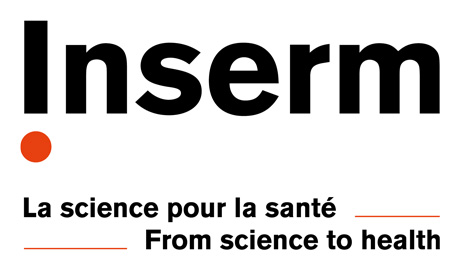






Inserm osteoarthritis research network
Peripheral and spine osteoarthritis: from pathophysiology to transformative therapeutics
The Inserm osteoarthritis research network (NetwOArk) aims to bring together all the scientific actors involved in research on osteoarthritis, in order to federate and promote the emergence of high-level scientific work in this field.
NetwOArk is supported by Inserm and the life science Institute Pathophysiology Metabolism Nutrition (IT PMN).
Coordinators: Jérôme Guicheux (INSERM U1229, Nantes Université), Francis Berenbaum (INSERM U938, Sorbonne Université).
The NetwOArk is structured around 4 workpackages (WP):
Keywords: peripheral and spinal joint cell/tissue biology; ageing and senescence; inflammation and immunity; metabolism; pain; mechanobiology; animal models and disease phenotypes
The last decade, intense research on joint degeneration and OA pathophysiology has led to the discoveries of novel pivotal biological cascades playing key roles in joint homeostasis. Despite these recent major breakthroughs, a clinically translatable treatment for OA is still lacking and thus prompt us to open new research windows in the physiopathogenic mechanisms of OA (morphogenic and differentiation factors, genetics and epigenetics, inflammatory molecules, metabolic pathways, mechano-signaling, autophagy/senescence..)Keywords: imaging ; biochemical; clinical biomarkers; omics.
There is a huge unmet need of biomarkers in OA, even for diagnosis or for prognosis. The main biomarkers in current development for OA are biochemical and imaging markers. It is very likely that the main reason why therapeutic trials of innovative molecules have all failed so far is related to a too late intervention in the disease. Being able to identify early diagnostic markers would allow patients to be recognized as responders to future experimental treatments. Moreover, due to the heterogeneity of the disease, we do not know yet how to identify those patients who will be fast progressors. Such prognostic biomarkers could be of great help. Future avenues for research include exploration of underlying mechanisms of disease and development of new biomarkers; technological development; the ‘omics’ (genomics, metabolomics, proteomics and lipidomics); design of aggregate scores combining a panel of biomarkers and/or imaging markers into single diagnostic algorithms; and investigation into the relationship between biomarkers and prognosis.Keywords: epidemiology and public health (disability), non pharmacological approaches (nutrition, physical activity, obesity, trauma..), targets, clinical trials.
OA is the most common age-related joint disease affecting >80% people beyond 55 years of age. In 2032, at least an additional 26,000 individuals per 1 million population aged ≥45 years are estimated to have consulted a physician for OA compared to 2012. These findings underscore the need to address modifiable risk factors and develop new effective OA treatments. So, there is an urgency to find out how to optimize the prevention of OA development before the occurrence of symptoms and/or structure alterations. Besides weight loss in obese patients and trauma prevention, little is known on the ways to prevent OA. Research on risk factors and epidemiology of OA should help design and implement future preventive strategies. Concerning treatments, at present, there is no cure for OA, non-pharmacological and pharmacological treatments are focused on reducing physical disability and controlling pain. New potential targets coming from WP1 research should be assessed according to a translational approach up to first-in-human trials.
Keywords: cell therapies; stem cells; biomaterials; e-health; artificial intelligence; robotics; joint prosthesis; tissue engineering; regenerative medicine; biotechnology.
Facing the absence of efficient treatment for peripheral and spine OA as well as intervertebral disc (IVD) degeneration, it has been proposed to exploit the therapeutic potential of 4R medicine (Replace, repair, regenerate and reprogram). This biologically-inspired therapeutic concepts based on the development of biomaterials, stem cells, artificial intelligence, robotics, and prosthesis are contemplated with increasing interest. Whether we will be able to translate these recent discoveries into successful treatments for peripheral and spine OA as well as IVD degeneration remain a challenge we would like to tackle in the near future.
Contact: institutPMN@inserm.fr